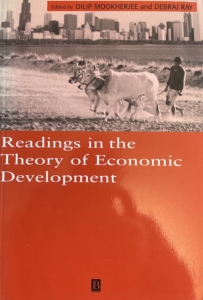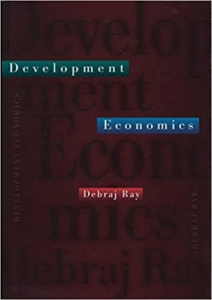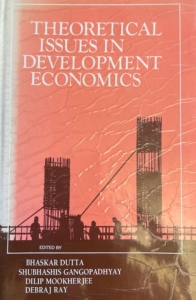Studies in Microeconomics 12(1) 10–31, 2024. Dedicated to Ashok Kotwal.
Summary. I study a simple model of labour markets with imperfect monitoring and efficiency wages that provide work incentives. Involuntary unemployment is an outcome, but it is just one particular instance of many inter-firm wage differentials that pervade the equilibrium. The goal of this paper is to study the relationship between firm size, work standards, wages paid, contractual utility for workers, and capital intensity in production. Under certain conditions: (a) larger firms pay higher wages and demand higher individual effort levels; (b) despite these opposing effects, larger firms offer a higher net contractual utility and (c) larger firms are more capital intensive, even when production functions are homothetic in capital and labour.
 (co-edited with Dilip Mookherjee), London: Blackwell, 2000.
(co-edited with Dilip Mookherjee), London: Blackwell, 2000. Princeton University Press, 1998.
Princeton University Press, 1998. (edited with Bhaskar Dutta, Shubhashis Gangopadhyay and Dilip Mookherjee), Oxford University Press, 1992.
(edited with Bhaskar Dutta, Shubhashis Gangopadhyay and Dilip Mookherjee), Oxford University Press, 1992.